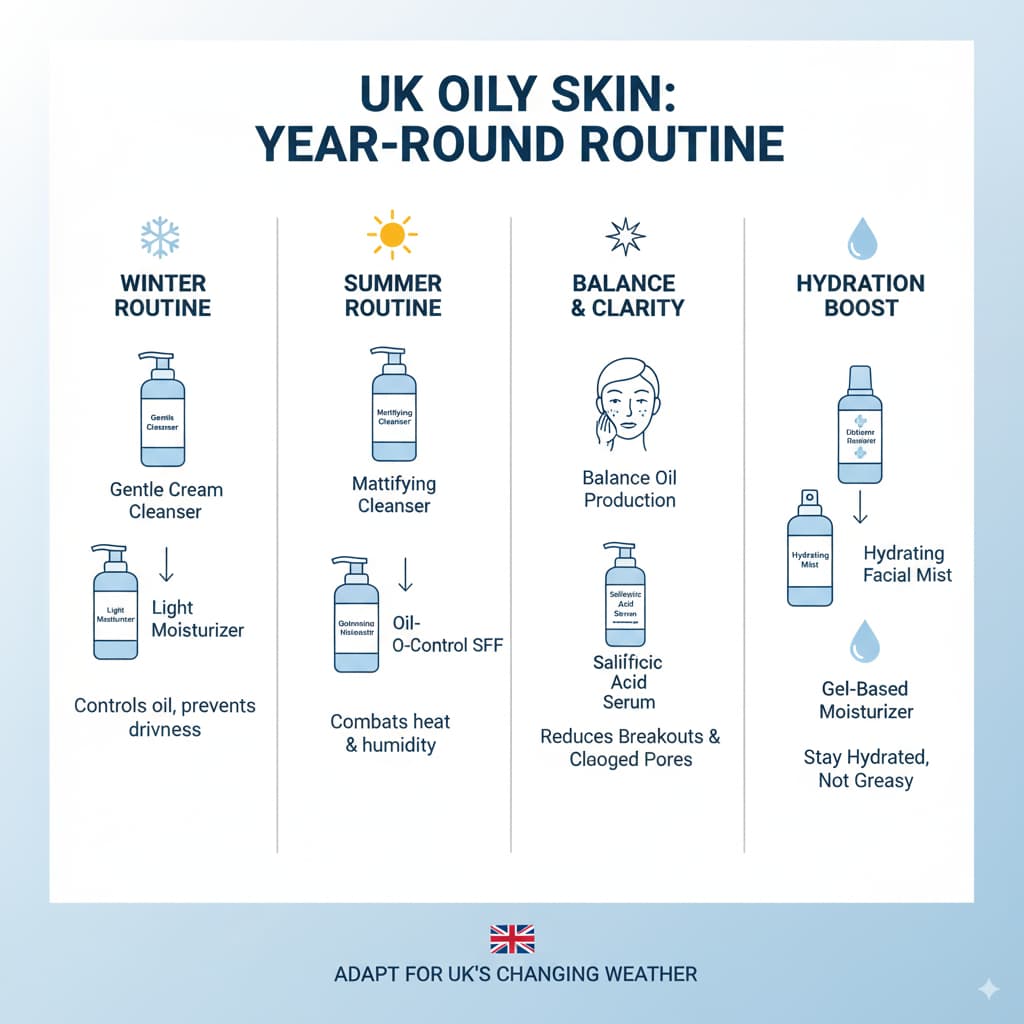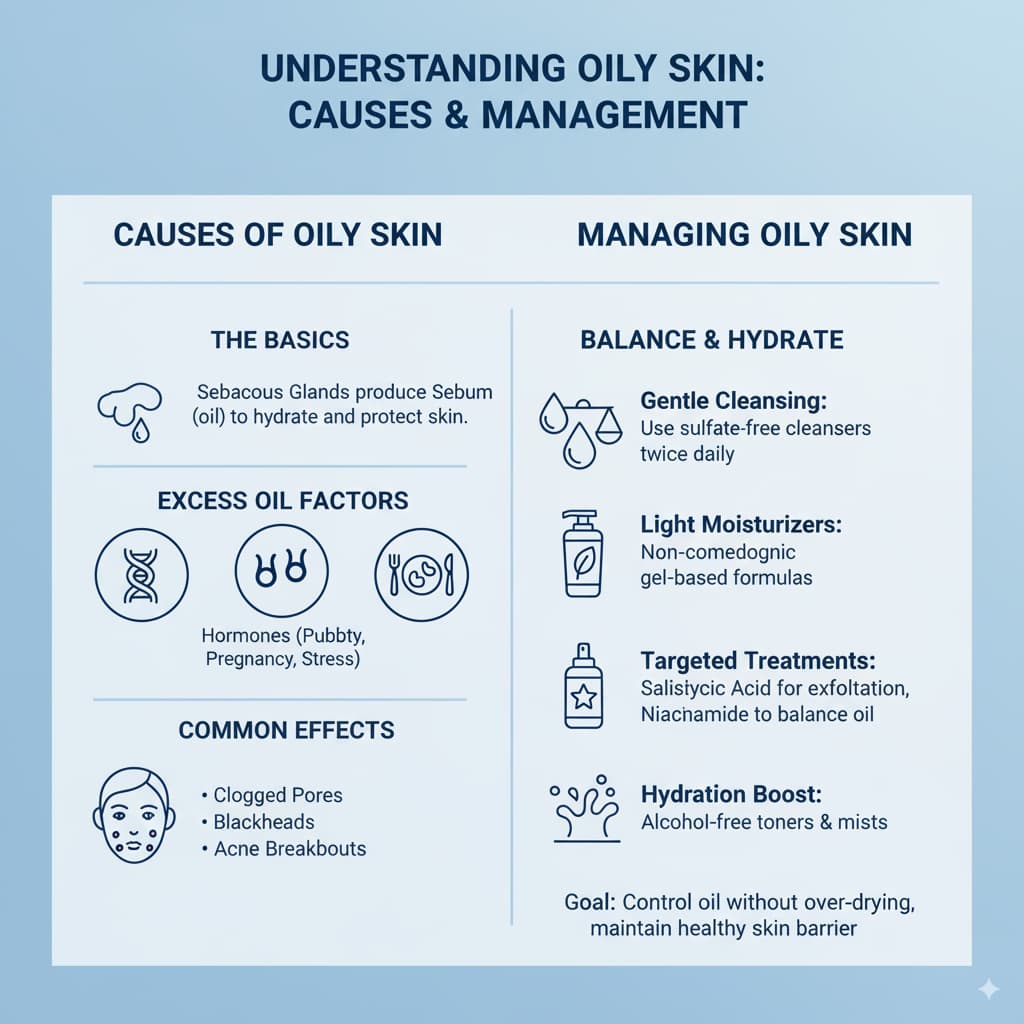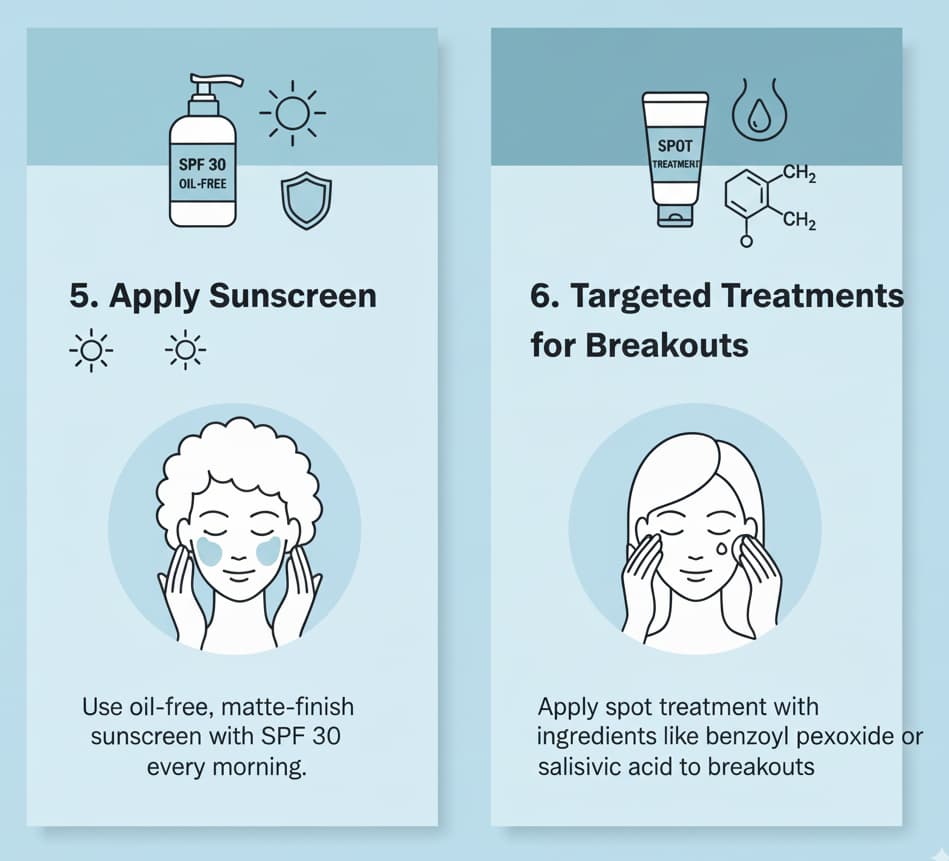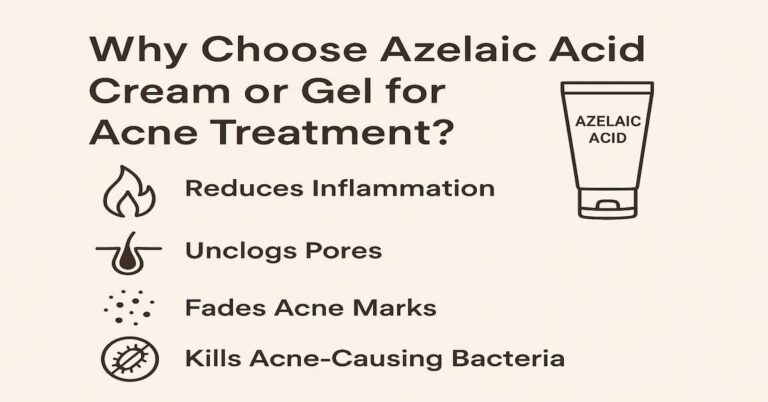Oily skin can be difficult to manage, especially with the UK’s fluctuating weather conditions. The combination of cold, damp winters and warm, humid summers means that oily skin requires a dynamic skincare routine to stay balanced and healthy. The right skincare can control oil production, reduce breakouts, and maintain hydration without over-drying the skin. This guide walks you through the best skincare routine for oily skin, tailored for the UK’s climate.

Understanding Oily Skin

Oily skin occurs when the sebaceous glands produce excess sebum, the natural oil that helps protect and hydrate the skin. While sebum is essential for skin health, an overproduction can lead to clogged pores, blackheads, and acne. Various factors, such as genetics, hormones, diet, and environmental conditions, contribute to oily skin. The goal of a good skincare routine is to balance oil production, prevent clogged pores, and ensure that the skin remains hydrated without excess oil.
The Ideal Skincare Routine for Oily Skin
1. Cleanse Regularly with a Gentle Cleanser
Cleansing is the first and most important step in managing oily skin. Choose a gentle, oil-free cleanser that effectively removes excess oil, dirt, and impurities without stripping the skin of its natural moisture. It’s important to use a non-comedogenic cleanser that won’t clog pores.
Oily skin needs to be cleaned thoroughly, but over-cleansing can irritate the skin and lead to an increase in oil production. Cleanse your face twice a day—once in the morning and once before bed. Avoid using harsh soaps or scrubs that may irritate the skin and trigger more oil production.

2. Use a Toner to Balance Skin’s pH
Toning helps to restore the skin’s natural pH level after cleansing, and it tightens pores to minimize oil buildup. For oily skin, alcohol-free toners are essential to avoid drying out the skin, which can cause it to produce more oil. Opt for toners that contain witch hazel, salicylic acid, or niacinamide as these ingredients help control excess oil, reduce inflammation, and promote clearer skin.
Using toner helps remove any remaining traces of oil or impurities left on the skin after cleansing. Apply it with a cotton pad or directly to the skin using your hands, and gently pat it in.
3. Exfoliate 1-2 Times a Week
Exfoliation is crucial for oily skin to prevent clogged pores, which can lead to acne and blackheads. It removes dead skin cells, allowing your pores to stay clear and reducing the risk of breakouts. Chemical exfoliants like salicylic acid or glycolic acid are great options for oily skin, as they penetrate deep into the pores and exfoliate from the inside out.
However, over-exfoliating can damage the skin’s barrier, leading to irritation and excess oil production. Limit exfoliation to 1-2 times per week, depending on your skin’s tolerance.

4. Moisturize to Maintain Skin Balance
Moisturizing is essential for all skin types, even oily skin. When you don’t moisturize, your skin can become dehydrated, causing it to compensate by producing even more oil. The key is to use a lightweight, oil-free moisturizer that hydrates without clogging pores.
Opt for gel-based or water-based moisturizers that absorb quickly into the skin and provide hydration without a greasy finish. Non-comedogenic formulas are ideal for oily skin as they won’t block your pores.
5. Apply Sunscreen Every Day
Sunscreen is a must for oily skin, just as it is for all skin types. Sun exposure can lead to premature aging, pigmentation, and exacerbate acne. It’s crucial to use a broad-spectrum SPF of at least 30 daily, even on cloudy days.
For oily skin, choose an oil-free, matte-finish sunscreen that provides protection without adding extra shine. Many sunscreens designed for oily skin help absorb excess oil and keep the skin looking matte throughout the day.

6. Use Targeted Treatments for Breakouts
If you have acne or occasional breakouts, it’s important to use spot treatments or targeted treatments that address the issue without irritating the entire face. Ingredients like benzoyl peroxide, salicylic acid, and retinoids can help reduce acne by targeting bacteria, unclogging pores, and reducing inflammation.
Apply spot treatments directly to blemishes after your moisturizer and before sunscreen. Make sure not to overuse these treatments, as they can cause dryness and irritation.
Additional Tips for Managing Oily Skin in the UK

Understand Your Skin Type Throughout the Year
Oily skin is affected by environmental changes, especially in the UK, where weather conditions can vary drastically throughout the year. In colder months, you might find that your skin needs extra hydration due to the dry indoor air from central heating. During the warmer months, oil production may increase due to higher humidity and exposure to the sun.
It’s essential to adjust your skincare routine as needed, especially during the changing seasons. For example, switch to a more hydrating moisturizer in winter or use a lighter sunscreen formula in summer. Pay attention to your skin’s needs and adapt accordingly.
Avoid Touching Your Face
Constantly touching your face can transfer oils and bacteria from your hands, leading to more breakouts. Try to avoid touching your face throughout the day, and be mindful of resting your face on your hands. Regularly washing your hands can also help minimize the transfer of bacteria to your face.
Diet and Lifestyle Factors
What you eat can also impact your skin’s oil production. A diet high in refined sugars, dairy, or processed foods can exacerbate oily skin and lead to more breakouts. Eating a balanced diet rich in fruits, vegetables, and healthy fats can help regulate oil production and promote clearer skin.
Staying hydrated is equally important. Drinking plenty of water throughout the day ensures that your skin stays hydrated and balanced, helping to control oil production.
FAQ: Common Questions about Oily Skin
- Can oily skin lead to acne?
Yes, excess oil can clog pores, leading to breakouts and acne. Keeping your skin clean and using oil-free, non-comedogenic products can help manage oily skin and prevent acne. - How can I tell if my skin is oily?
Oily skin often looks shiny, especially in the T-zone (forehead, nose, and chin). It may also feel greasy to the touch and be prone to blackheads or enlarged pores. - Is it okay to moisturize oily skin?
Yes, it is essential to moisturize oily skin. Use a lightweight, oil-free moisturizer to keep your skin hydrated without adding excess oil. - How often should I exfoliate oily skin?
Exfoliate oily skin 1-2 times a week to prevent clogged pores and breakouts. Avoid over-exfoliating, as it can irritate the skin and increase oil production. - Can oily skin change with age?
Yes, as you age, your skin’s oil production may decrease. It’s important to adjust your skincare routine to match the changes in your skin over time. - Do I need to use a toner?
Toners are not essential but can help balance the skin’s pH after cleansing and control oil production. Opt for alcohol-free toners to avoid dryness. - What ingredients should I look for in skincare for oily skin?
Look for products with salicylic acid, niacinamide, tea tree oil, and glycolic acid. These ingredients help control oil, reduce breakouts, and keep pores clear. - Can oily skin cause blackheads?
Yes, excess oil can clog pores, leading to blackheads. Regular cleansing and exfoliating can help prevent and treat blackheads. - How can I control shine throughout the day?
Use blotting papers to absorb excess oil throughout the day. A mattifying primer can also help control shine and keep your skin looking fresh. - What should I do if my oily skin gets irritated?
If your skin becomes irritated, cut back on harsh products like exfoliators and spot treatments. Use soothing ingredients like aloe vera or chamomile to calm the skin.
Conclusion
Oily skin doesn’t have to be difficult to manage. With the right routine, you can control excess oil, prevent breakouts, and keep your skin healthy and hydrated. The key is using gentle, non-comedogenic products, balancing oil production, and adjusting your routine to suit the changing seasons. By following this skincare routine and understanding your skin’s needs, you can achieve a clear, balanced complexion throughout the year.



